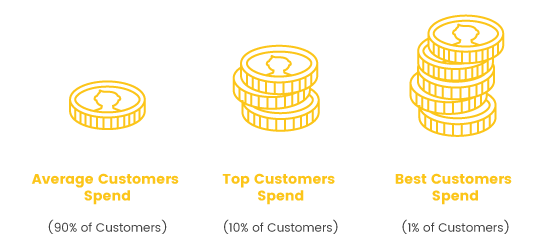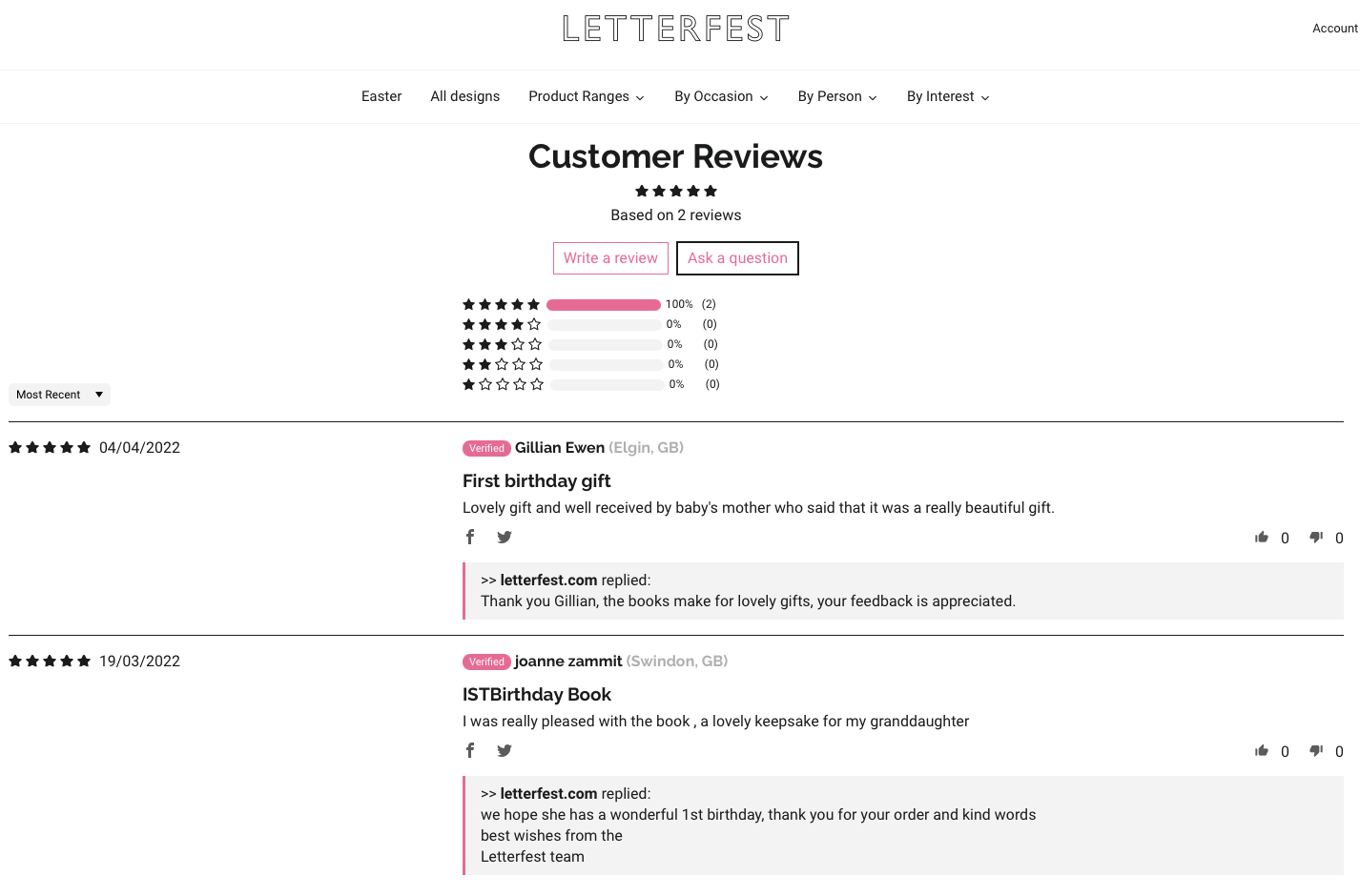6 Reasons Why Listening to Customers is Important (And 5 Ways To Do It)
With the power to unlock valuable insights into your brand, drive meaningful improvements and keep your customers coming back for more, listening to customers is something you simply can’t afford to ignore in your ecommerce strategy. Keep reading to find out more about why listening is so important, and how exactly you can tap into your customers’ feelings.
Written By
Hannah Smiddy

Flourishing in today’s ecommerce landscape is no mean feat. Expectations are high. Competition is fierce. Shoppers are fickle.
Listening to customers is a key part of the puzzle when it comes to surviving and thriving in the world of online retail.
However, merely tuning into your customers’ opinions reactively (when something goes wrong), or opportunistically (when you need something), simply won’t cut it.
Instead, it’s important to listen proactively and attentively throughout the customer journey, making people feel heard. What do your customers want? How would they rate their experience with your brand? How could you do better?
It doesn’t stop there, though. The key to listening to customers is to actually do something with the information they give you. You need to listen, respond, and act.
The result? Genuine insights that can help you improve customer experience, satisfied shoppers who stick around and spend more, and a boost in the metrics that matter most.
In this article, we’ll explore why listening to customers is so important, examining six benefits it can bring to your business. We’ll also consider how to listen to customers effectively, enabling you to up your game when it comes to collecting consumer feedback.
Along the way, there’ll be advice and insights from Swanky’s Head of Growth, Matt Abbott, as well as experts from our Growth Accelerator team.
Benefits of listening to customers
#1 Genuine feedback to help improve the overall customer experience
Listening to customers is a great way to gather genuine, real-time feedback about your products, website and overall experience with your brand.
This can paint a clear picture of what makes your shoppers tick (and click!), as well as the things they’re not so fond of.
You can use this feedback to guide data-driven decision-making across your business. Ultimately, the more you learn from your customers, the more improvements you can make to your customer experience, and the more value you can provide – which is great news for both shoppers and your metrics.
“Your customers will be brutally honest. But it’s this frank, objective feedback that will allow you to deliver exactly what your audience wants. They’ll tell you what you can do better and what they need, helping you to innovate and improve.”
– Matt Abbott, Head of Growth at Swanky
#2 Positive content to share across your channels
Another benefit of listening to customers is the catalogue of social proof you’re able to cultivate. You can leverage positive comments that you receive from customers about your products and service in your marketing strategy, sharing them on your website and other channels.
Leading pet supplements retailer, and Swanky client, YuMOVE uses this tactic, as you can see in the example below:

Reviews and testimonials like this one are integral to the customer journey, with nearly 90% of consumers purporting to read these before making a purchase, and just under 80% saying they trust online reviews as much as personal recommendations.1
These types of social proof are particularly important for building confidence amongst potential customers and removing barriers to conversion, especially in ecommerce where shoppers can’t physically see or touch your products before committing to a purchase.
#3 New insight into your products
Listening to customers can help you learn more about your products too. And who better to learn from than the people actually using your products in their daily lives?
Shoppers might be able to provide a new perspective on the design of an item, its functionality, or the packaging it arrived in, for example.
Or perhaps by listening to their feedback you’ll uncover a hidden issue you never knew existed?
You might even identify demand amongst your audience for a new product or variation.
#4 Better understanding of your customers
Not only will listening to customers give you a better understanding of your products, it’ll enable you to learn more about them and their needs. This is key in being able to deliver a relevant and compelling experience that satisfies and retains customers.
“Assuming what your customers want isn’t the same as knowing what they want,” explains Becci Bayliss, one of Swanky’s dedicated Data Analysts.
“You might think you’re providing a great customer experience based on what you personally would want, or even what has worked in the past, but your customers might be expecting something different in reality. And if you can’t give your customers what they want, the chances are a competitor will.”
What’s more, different types of customers might want different things. By listening to what your shoppers have to say, you can get a much clearer picture of the distinct segments within your audience, which is important for delivering a targeted, more personalised experience (something that today’s consumers crave).
#5 Improved loyalty and retention (via stronger customer relationships)
“One of the best ways to improve loyalty and reduce churn is to build strong relationships with happy customers,” says Becci. “Making customers feel heard is the first step.”
Being listened to makes customers feel understood and valued. And if you can demonstrate that you’ve not only listened to their feedback, but you’ve acted on it, this will make your customers feel even more appreciated.
When consumers feel valued like this, their sense of belonging increases, which in turn creates the kind of strong emotional connections that enhance the customer experience and secure long-term loyalty.
Loyal customers typically purchase more frequently, and spend more in each transaction. And, the longer a customer keeps coming back to your brand, the higher their customer lifetime value.

Image source: Smile.io
The positive impact that listening can have on retention makes this a particularly important strategy for subscription brands, for whom customer churn represents a central challenge. Proactively asking for and acting on feedback is key for engaging subscribers and encouraging them to remain loyal.
Check out this blog post to learn more about how to retain customers.
#6 Creation of brand ambassadors
Happy, loyal customers who feel listened to are also more likely to spread the word about their positive experiences with their friends and family (without being prompted to do so). They’ll advocate for your brand, helping to bring new customers on board without the steep acquisition costs.
According to Mention Me, these referred customers will spend on average 11% more on their first order!
How to listen to your customers
The advantages of listening to customers are clear. But how exactly should you go about the listening process in order to realise all these benefits for your business?
“You don’t need to spend thousands on focus groups when much cheaper alternatives exist,” explains Matt Abbott, Head of Growth at Swanky.
“For example, surveys are a great – and considerably cheaper – way of collecting feedback. Also, you’ll find plenty of customer insight in things like reviews, customer service reports, and inbound enquiries – you’d be surprised how much you can learn about your customers and your products simply by digging into each of these elements.”
Let’s explore some of these methods of listening to customers in more detail. Of course, there are a whole host of ways to let customers have their voice, but these are some of the most popular and accessible to consider.
#1 Invite customers to participate in surveys
The most popular method for gathering feedback from customers is by conducting surveys. These are a valuable way to learn from your customers and adapt your business in a way that will better suit their needs.
There are a few different ways you can invite customers to participate in a survey, including via an on-site pop-up, or through a post-purchase follow-up email. You might want to invite your entire customer base to provide feedback, or just a particular segment.
Try to be as open-ended as possible in your surveys – you want your customers to be able to explain their answers in more detail if they need to, allowing for honest, unrestricted feedback.
At Swanky, customer surveys are a key part of our Growth Accelerator engagements, as Digital Strategist Kate Prior explains:
“We conduct surveys for all our clients in the Growth Accelerator service as part of an initial analysis and insights phase. This is important in order to understand more about their customers. Primarily, we seek to understand points of friction for customers, such as why they leave the site, if they were able to complete the purpose of their visit, and indeed what that purpose was. This helps identify key areas we then need to prioritise solutions for in our optimisation work.”
#2 Capture, analyse and reply to reviews
Capturing reviews and testimonials can provide valuable insight into your products and the overall experience someone has had with your brand – they are a great way to listen to your customers. They provide a window into the customer journey, highlighting the things that are working well (which you should try to duplicate for other customers), as well as the aspects causing dissatisfaction (which you should aim to adapt and improve).
Customer review platform Okendo, a tool we regularly recommend to our clients, features advanced analytics that allow merchants to understand customer feedback across specific customer segments, product groups and time scales. Plus, you can better understand how customers feel about your products through Okendo’s sentiment analysis function, which uses natural language processing to analyse the language in a review.
It’s not enough just to collect and analyse reviews though – you should be replying to them too. Taking the time to respond demonstrates to both current and potential customers that you’re listening and that you value their opinions.
When it comes to negative reviews, make sure you respond quickly, with sincerity and empathy.
Be sure to acknowledge positive comments as well, thanking shoppers for their glowing reviews – just like Swanky client Letterfest has in the example below. This will help you build a rapport with customers and further strengthen your emotional connection with them (sparking all the benefits we discussed earlier in this article, like repeat purchases and customer advocacy).

#3 Monitor and analyse social media posts
Social media is another valuable place to look if you want to learn how your customers feel about your brand in real-time. In fact, recent research by Hootsuite showed that over 65% of marketers either somewhat or strongly agree that their social media listening strategy increased in value in 2021.
With the right tools at your disposal, you can:
- Monitor social media platforms for mentions and conversations about your brand (and your competitors!);
- Analyse what users are saying to understand how they feel (social media sentiment);
- Identify opportunities to act.
A social listening strategy like this can help you understand and engage with your audience, acquire industry intelligence, get ideas for website improvements, stay alert to potential PR crises, and identify opportunities for collaboration with social media creators.
Here are some tips to keep in mind for effective social listening:
- Ensure you’re monitoring relevant keywords, including your brand name, product names, competitors’ names, slogans, branded hashtags and industry buzzwords. Remember that wider industry terms may evolve over time.
- Make sure you’re listening in the right places – where are people talking about your brand?
- Stay alert to major changes in sentiment, which could signal a big change in brand perception.
- Don’t just track your mentions – act on them!
#4 Examine support tickets and chat transcripts
Your customer support tickets and live chat transcripts can be treasure troves of insight in your listening strategy. Analysing these will give you an understanding of common issues that customers encounter with your products and service, as well as pain points across your website.
There’s no need to comb through individual tickets or chats either, as leading ecommerce helpdesk solution Gorgias (our go-to recommendation for customer service functionality) leverages intent and sentiment detection to do this for you – automatically.
#5 Engage in conversation
Initiating a conversation with a customer can produce richer, more detailed feedback than that given through a survey or on social media.
It’s important to reassure customers that you’re genuinely listening to them and that you value what they have to say. Here are a few ways you can do this:
- Offer a personal touch – sticking to rigid call scripts suggests to customers that you’re merely on a tick-box exercise.
- Empathise with their frustrations, or express your gratitude for their positive comments.
- Ask follow-up questions.
- Check that you’ve understood their feedback correctly, whilst avoiding interrupting them in the middle of a sentence.
- Don’t try to hurry the conversation.
Summary
In this article, we’ve shown why it’s so important to listen to your customers, and how exactly you can do this. Listening to customers can help you deliver a compelling customer experience, thereby unlocking loyalty, retention and growth.
Remember though, it’s not enough to simply listen, you have to leverage what your customers are telling you and take positive action. The key is to connect all types of customer feedback together, listen to what your shoppers are saying, identify opportunities, and, crucially, act.
Swanky’s ecommerce data and analytics service
Did you know that Swanky offers a Data & Analytics service, delivered by a dedicated team of expert ecommerce analysts? We’ll make your data more accessible and interpretable, providing real-world knowledge on how to unlock this insight and take your business to the next level. From standalone data visualisation through to expert commentary and strategic consultancy, we offer three different levels of service depending on your business needs.
Our Swanky Data Dashboard is a common feature across all service tiers, aggregating data from multiple sources, including Google Analytics, Shopify Plus, Recharge, Klaviyo, Facebook and more. Click here to test-drive the dashboard for 30 days – it’s free!
For reference:
[1] https://www.oberlo.com/blog/online-review-statistics

